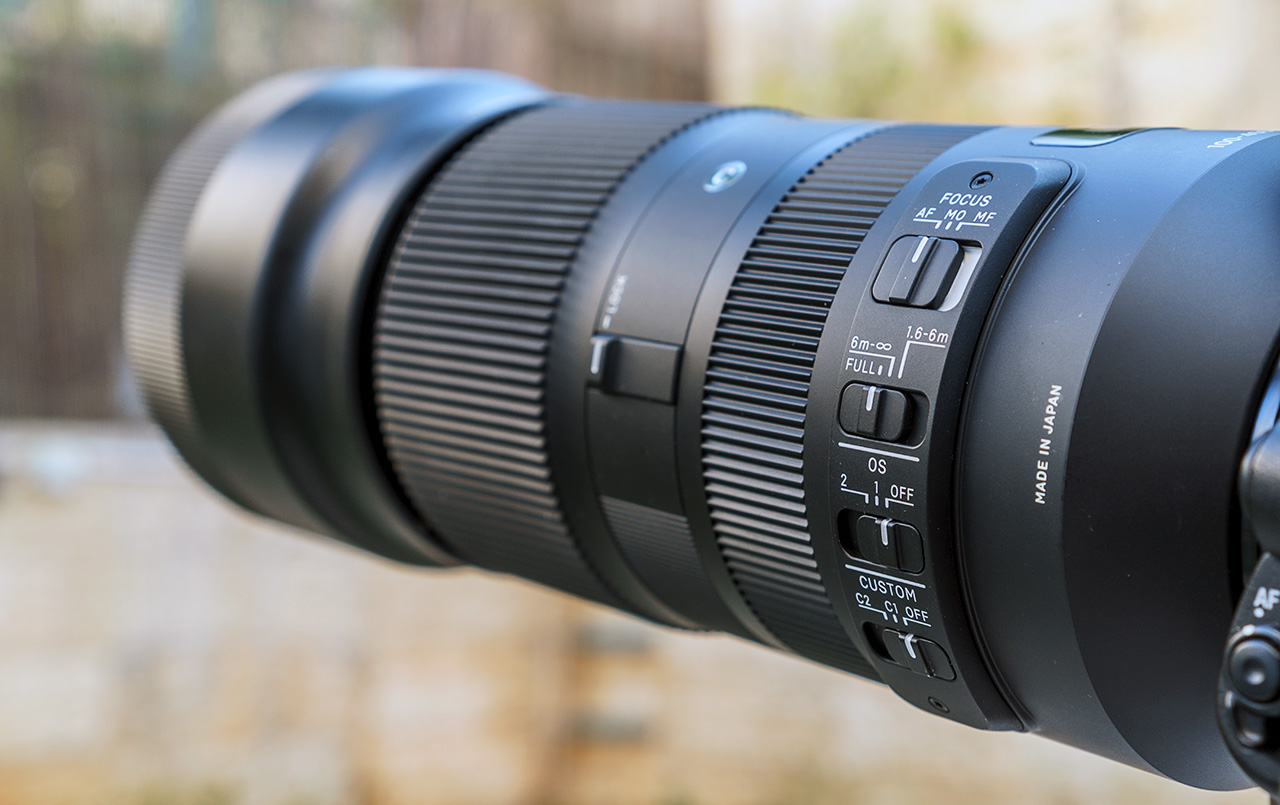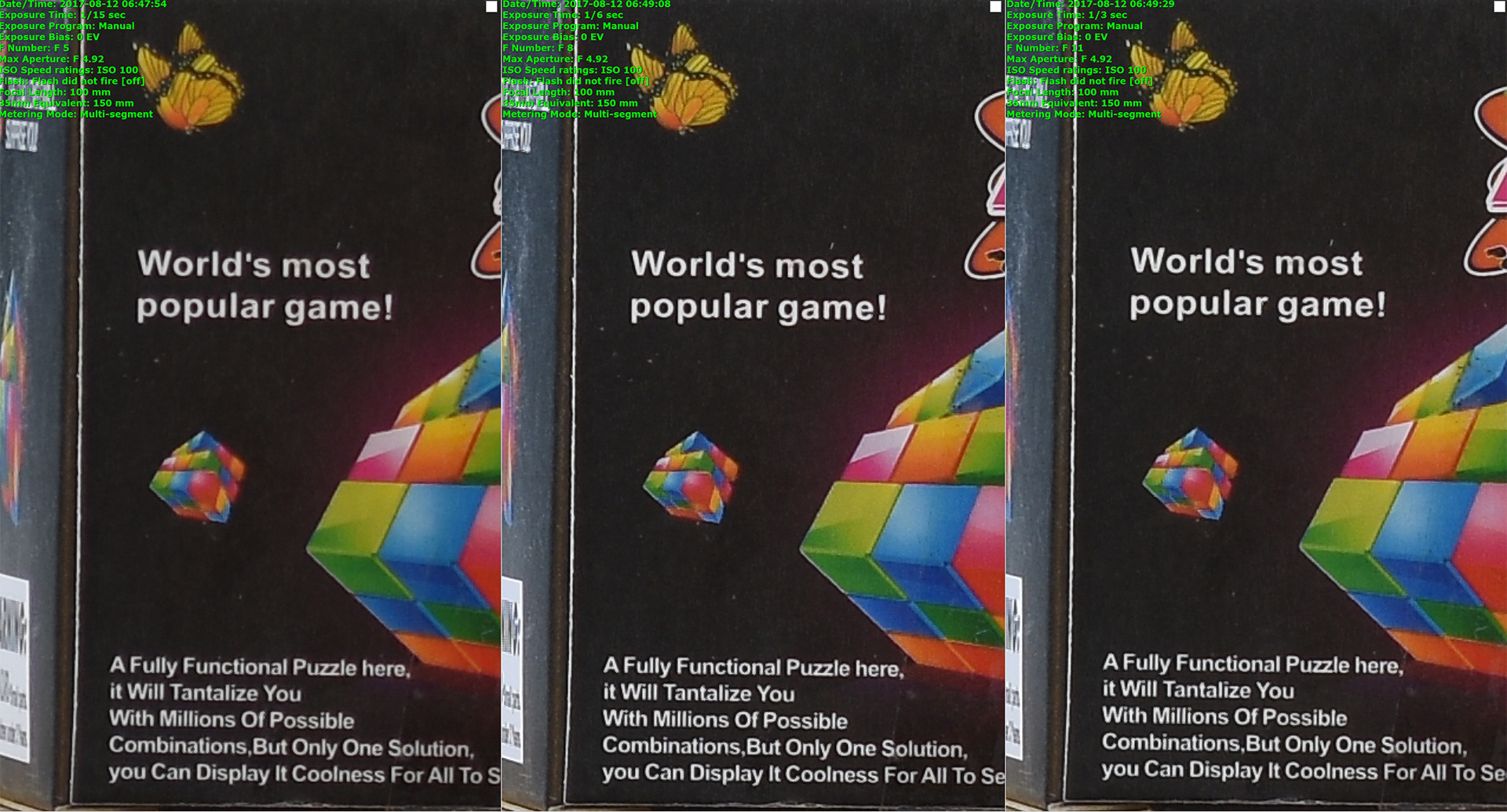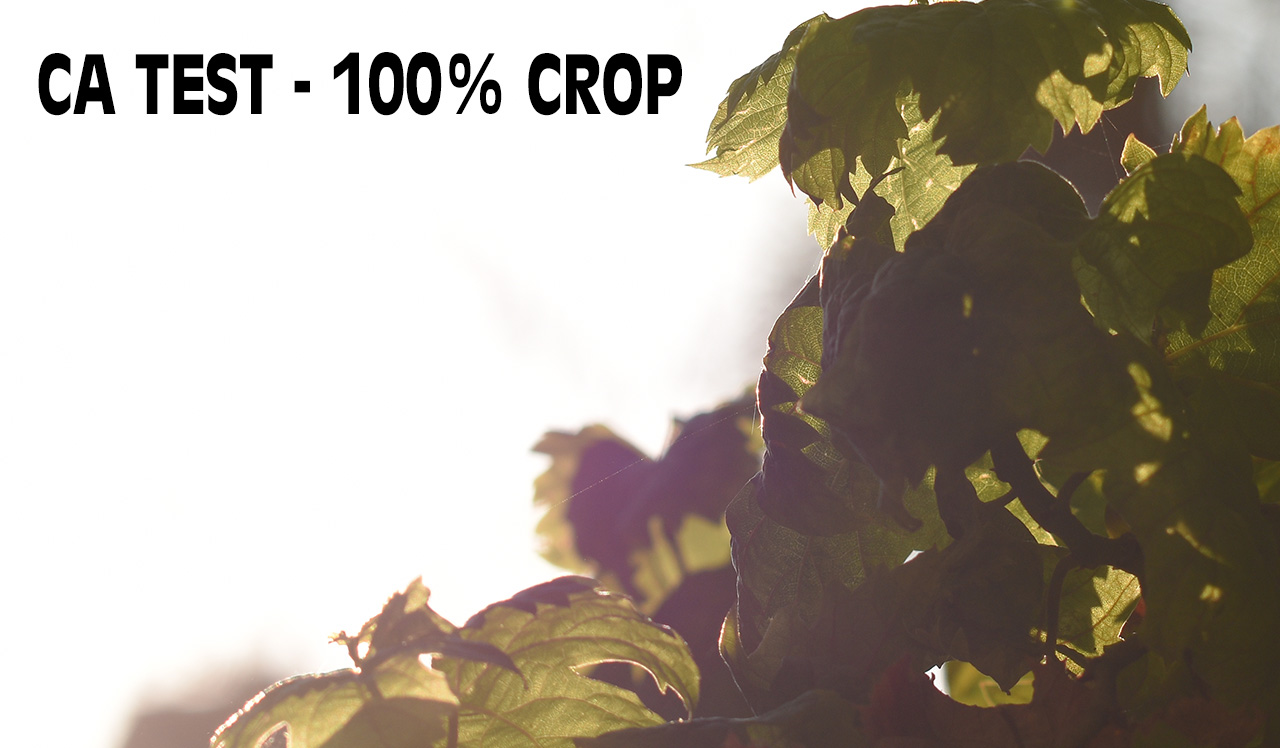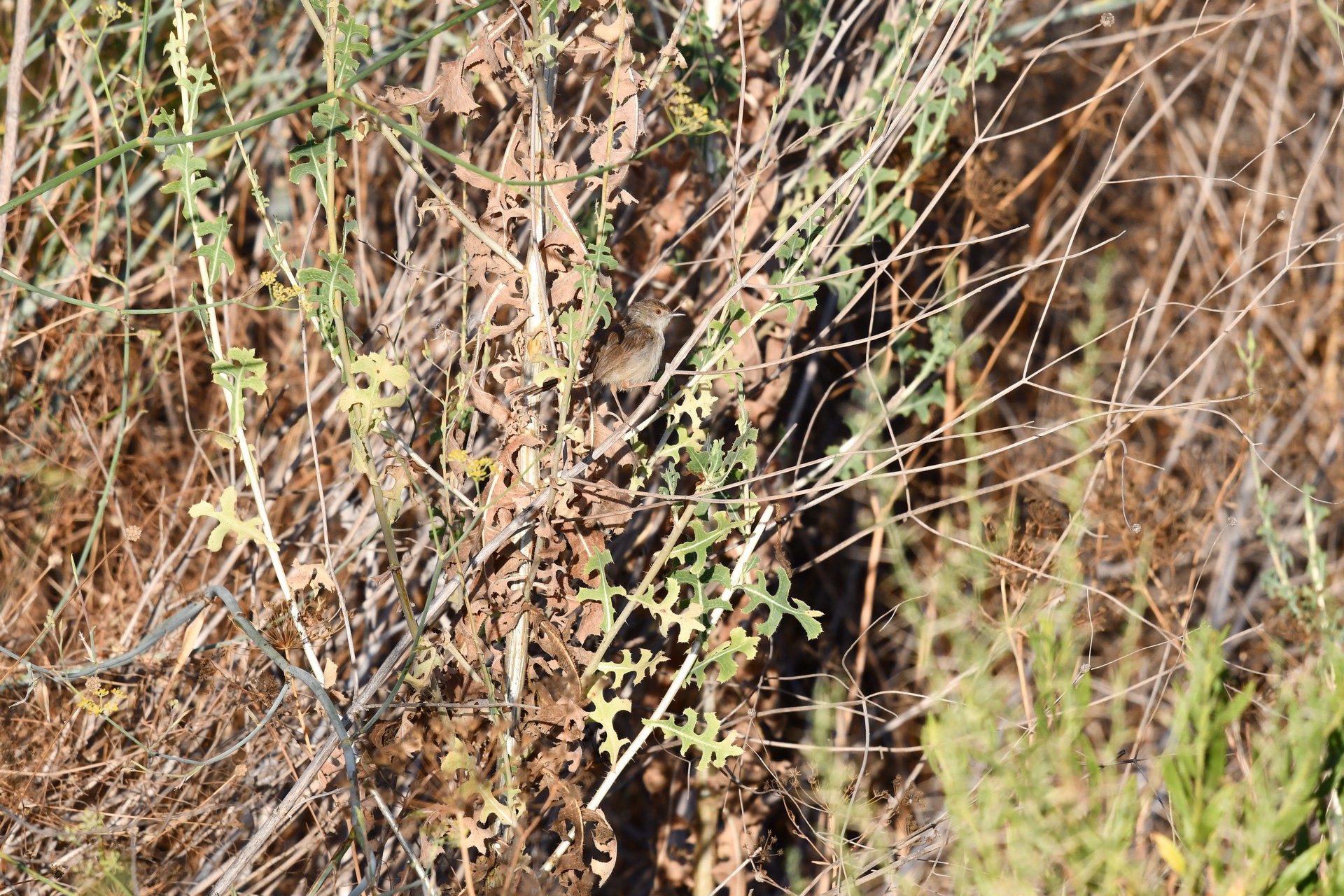In the last couple of years, we had a chance to test several zoom telephoto lenses from Nikon, Tamron and Sigma and we certainly feel as if we have quite a bit of perspective with these types of lenses.
The lens that we are reviewing today is the latest zoom telephoto offering from Sigma and to be entirely honest when it was first announced earlier in 2017 we thought that it is quite a redundant lens with the existing 150-600mm contemporary and Sports variants. However, as we shall see in this review, after using this lens for a couple of weeks we feel very differently.
The front element of the Sigma 100-400mm f/5-f/6.3 DG OS HSM C

Build quality
Despite being a contemporary lens and not a sports or ART lens, the build quality of 100-400mm Sigma is very good and the lens feels robust – much better made than our now pretty old Nikon 70-300mm lens. The lens has a metal mount and a rubber sealing.
The front element is pretty large with a 67mm filter thread and lens comes with a plastic hood which we used every time.
The lens is about 20cm or 8 inches when closed down and 26cm or 10 inches open and the hood adds about 5 extra cm or just over 12 inches. The lens weighs 1.2kg or 43 ounces. Both the size and weight of this lens are significantly lower than any of the other zoom telephoto lenses that we have tested all are much closer to 2kg including the Nikon 80-400mm (although this lens is a bit faster).
The lens has a thick zoom ring which turns in the opposite direction than Nikon lenses typically do (if you have the Canon version you will feel more at home here) and an exceptionally nice focus ring close to the mount. The focus ring was really a joy to use and we found ourselves using it from time to time to help in difficult focusing situations.
The lens has no less than five switches. The first locks the zoom ring – nice to have although with such a new lens we didn’t feel any lens creep.
The four main switches include a Manual and Auto focus with a manual override mode. A 3 state focus limiter – full, 6m-infinity and 1.6-6 meters, an image stabilizer switch with 3 modes – off, Mode I (normal) and II (panning mode), a custom switch with 3 modes – off C1 and C2 (which allows precise autofocus calibration at four distances for 4 focal lengths with the Sigma software and dock).
Lots of switches

AF speed and Image stabilization
With the lens limiter set to full, focusing speed wasn’t always super fast on our Nikon D7500. Using the limiter in one of the other two settings did help but at least from our testing shooting birds in flight didn’t prove to be an easy task (and to be fair, with smaller faster birds it never is).
We didn’t have a chance to play with all of the image stabilization modes in the two weeks or so that we had the lens but from a quick test, the system seems to work fine and do a nice job at 400mm. We did encounter some jumpiness in the viewfinder from time to time when the system kicked in – similar to what we saw with some Tamron zoom lenses in the past. This issue is something that we never encountered with Nikon lenses so keep this in mind.
Performance
We tested the sharpness of the lens on the somewhat higher resolution Nikon D7200 instead of the D7500 which we used most of the time with this lens. All the images were taken on a tripod using a timer.
Sharpness – At the center at 100mm the image is just a little soft wide open but achieves very good sharpness at f/8 and stays sharp at f/11.
Center sharpness at 100mm (left f/5, center f/8, right f/11)
Interestingly on the sides of the frame sharpness is good wide open and gets just a tiny bit better at f/8 at 100mm – very impressive performance.
Side sharpness at 100mm (left f/5, center f/8, right f/11)
At 400mm there is just the tiniest improvement going from f/6.3 to f/8 in the center of the frame and f/11 looks about the same.
Center sharpness at 400mm (left f/5, center f/8, right f/11)
At the side of the frame, we see something similar – a slight improvement going from f/6.3 to f/8. The f/11 shot looks a bit softer so you probably want to stay at f/8 if possible.
Side sharpness at 400mm (left f/5, center f/8, right f/11)
CA – We were super impressed by how well this lens fights chromatic aberration – even under extreme lighting conditions we were unable to find any hint of purple fringing on our images – a big thumbs up for Sigma.
We found No CA at all – very well Sigma!
Flare – The lens seems to handle front light and flaring nicely most of the time – just keep the hood on.
Good handling of flare

Vignette – since we tested the lens on a crop body there was not much point in testing Vignette.
Barrel distortion – As you might expect from this type of lens there was no barrel distortion at 100mm or 400mm but also no significant pincushion distortion.
No barrel distortion


Bokeh – As a long telephoto zoom the lens can give you a very nice separation from the background and you can judge the quality of the bokeh for yourself from these images.
Two examples showing bokeh and background separation


Close ups – We were really happy and even a little bit surprised by the close-up results of this lens. At around 1.5 meters or just under 5 feet, we got a max reproduction ratio of just over 1:3.5. You can see a close up image that we took as well as a really lovely dragonfly video we shot on a monopod with the D7500.
Not a true macro lens but has good magnification
Conclusion
The Sigma 100-400mm lens was a real surprise to us. We came into this review feeling that this lens might be completely redundant given the existence of the longer and not much more expensive 150-600mm Sigma (and for that matter the equivalent Tamron lenses) but after working with the lens we can say that there is certainly a room for this lens as well.
Sigma created a fairly compact and more importantly light telephoto zoom lens which is almost half the weight of its longer contemporary sister and close to 1/3 the weight of the sports version. Yes, this is only a 400mm lens and at f/6.3 it is not going to set any speed records or perform well in anything beyond optimal lighting conditions, but it is much more manageable for hand held shooting than any of the other zoom telephoto lenses that we tested and that is a very big thing for a lot of users.
Sharp lens

No less important – this lens sacrifices nothing in terms of image quality which in our testing proved to be very high across the frame (at least on our crop camera) and although the focusing speed is only decent, if you work with a well performing modern DSLR and use the focus limiter correctly you can get very good results with the lens.
In terms of pricing, at $800, the lens is almost $200 cheaper than the Sigma 150-600mm contemporary lens and much more affordable than anything recent Nikon or Tamron has to offer in the category.
Relatively compact zoom-telephoto

At the end of the day if you are looking to step into the zoom-telephoto world and don’t want to buy a lens which will break your back or your wallet, but still get very good image quality the Sigma 100-400mm is one of the first lenses that you should consider.
Gallery – all images were shot using the Sigma 100-400mm f/5-f/6.3 DG OS HSM C on the Nikon D7500 (click to enlarge)
You can check out more LensVid exclusive articles and reviews on the following link.

You can support LensVid by shopping with our affiliate partners
Affiliates: Amazon, B&H, Adorama and E-bay.
Why should you trust us?













